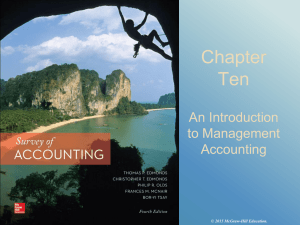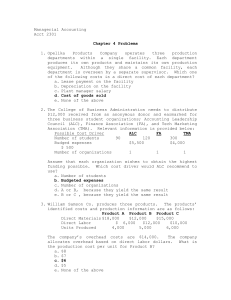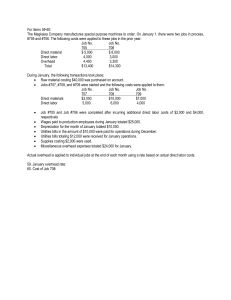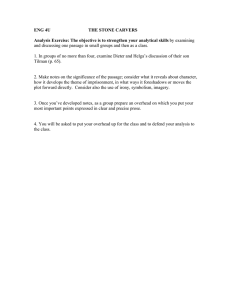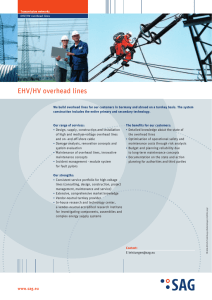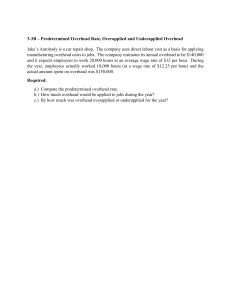Chapter 8 Problem C
advertisement
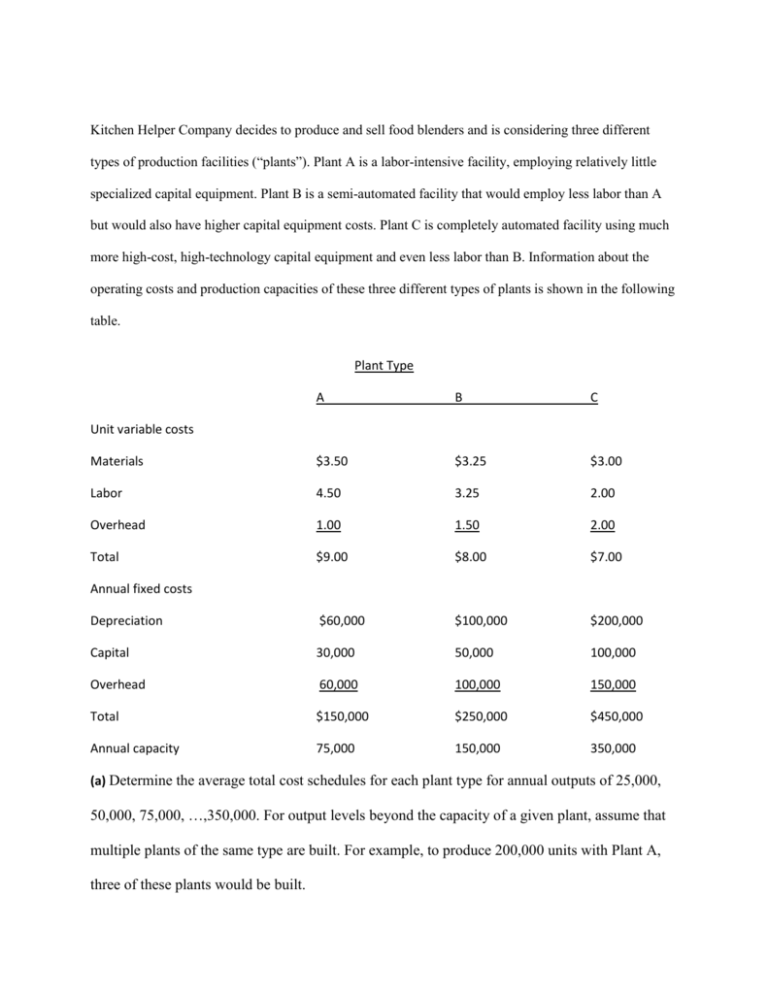
Kitchen Helper Company decides to produce and sell food blenders and is considering three different types of production facilities (“plants”). Plant A is a labor-intensive facility, employing relatively little specialized capital equipment. Plant B is a semi-automated facility that would employ less labor than A but would also have higher capital equipment costs. Plant C is completely automated facility using much more high-cost, high-technology capital equipment and even less labor than B. Information about the operating costs and production capacities of these three different types of plants is shown in the following table. Plant Type A B C Materials $3.50 $3.25 $3.00 Labor 4.50 3.25 2.00 Overhead 1.00 1.50 2.00 Total $9.00 $8.00 $7.00 Depreciation $60,000 $100,000 $200,000 Capital 30,000 50,000 100,000 Overhead 60,000 100,000 150,000 Total $150,000 $250,000 $450,000 Annual capacity 75,000 150,000 350,000 Unit variable costs Annual fixed costs (a) Determine the average total cost schedules for each plant type for annual outputs of 25,000, 50,000, 75,000, …,350,000. For output levels beyond the capacity of a given plant, assume that multiple plants of the same type are built. For example, to produce 200,000 units with Plant A, three of these plants would be built.


